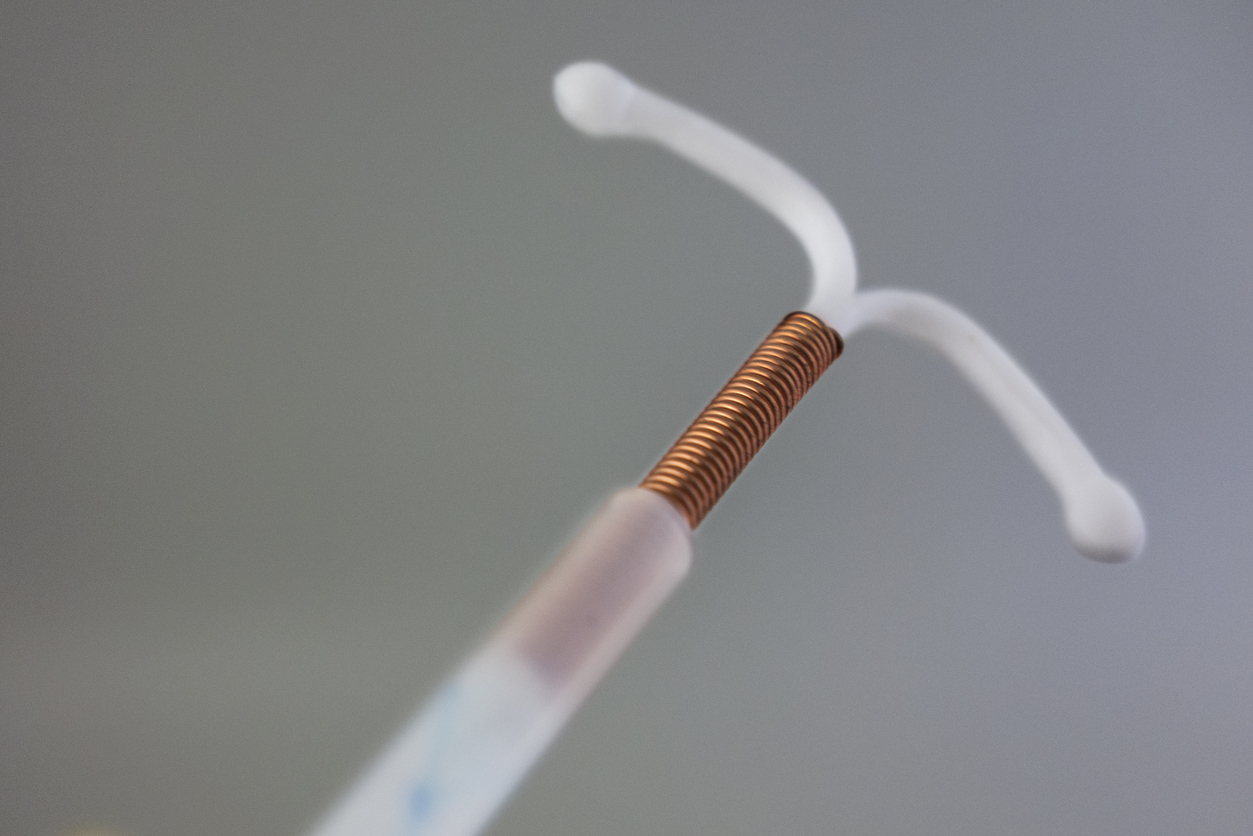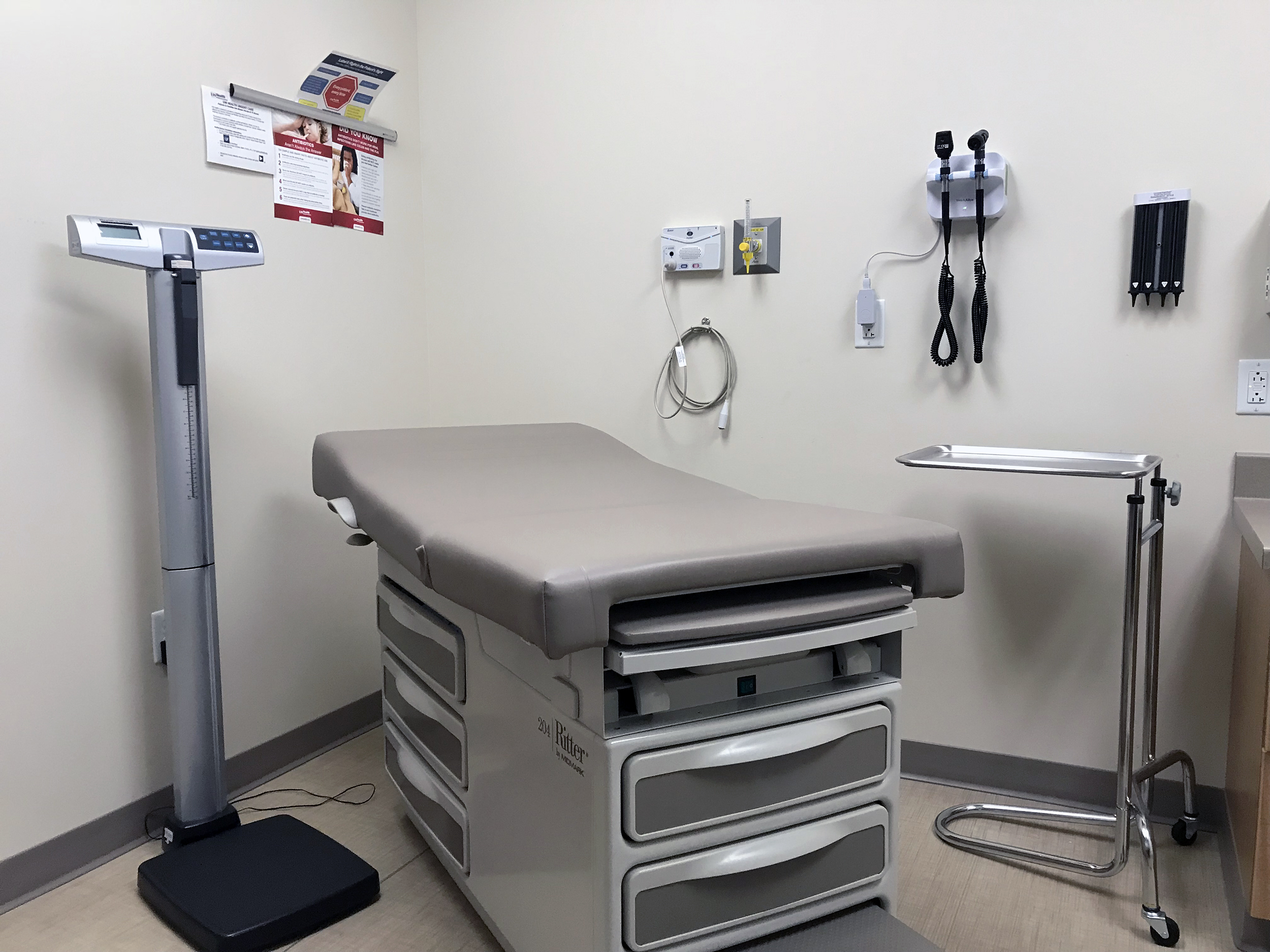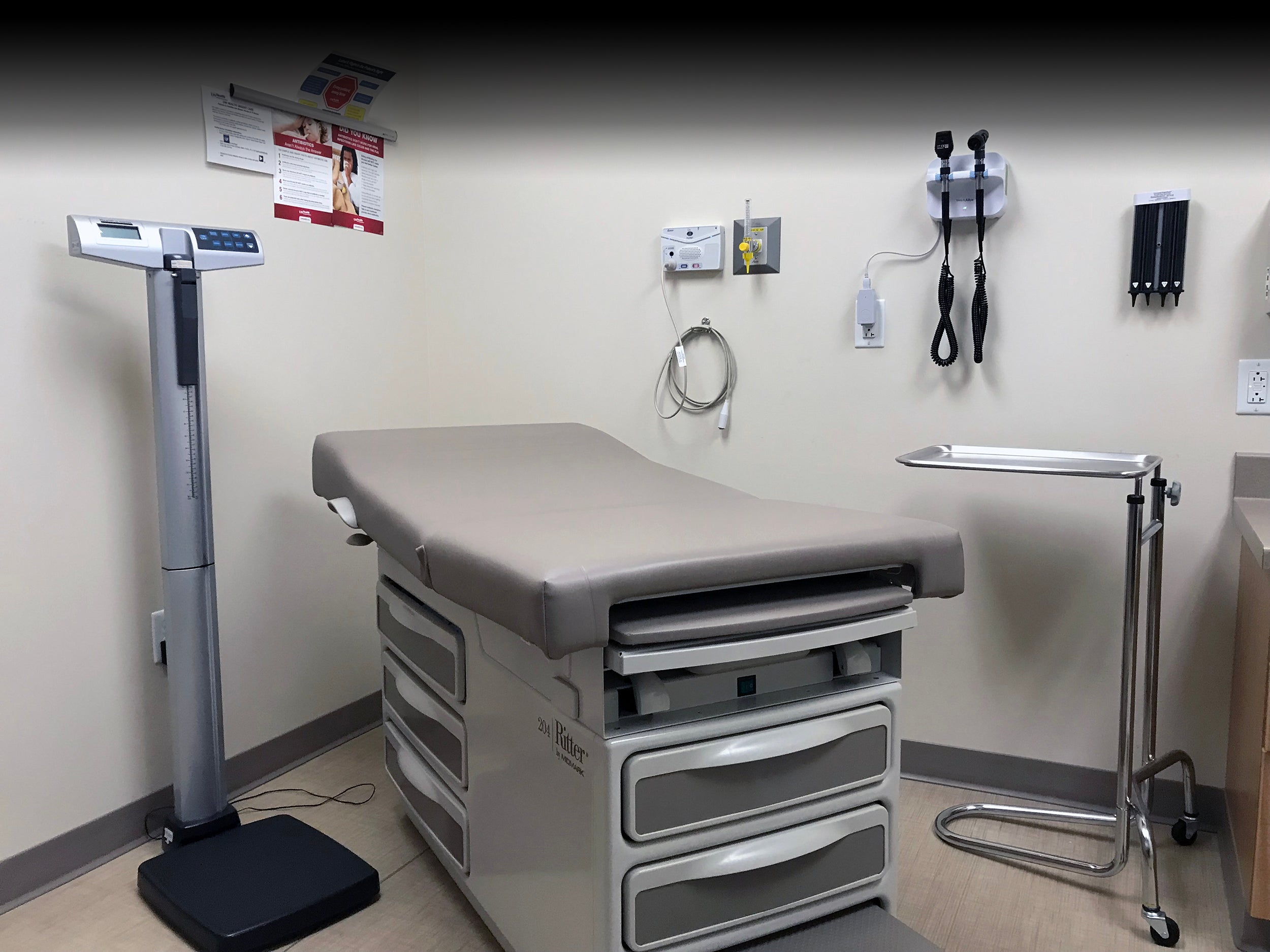A few years ago, Rhea Lyons went to her doctor’s office in Madison hoping to try one last remedy for her persistent pelvic pain. Instead, the procedure to place an IUD gave her one of the worst pains of her life.
IUDs, or intrauterine devices, are commonly used as contraception. But in Lyons’ case, it was one method her doctor suggested to treat her suspected endometriosis, a hard-to-diagnose disease that causes serious pain.
“I tried so many other things, and the hope was that this would maybe help,” she told WPR’s “Wisconsin Today.”
Stay informed on the latest news
Sign up for WPR’s email newsletter.
Lyons said her doctor told her the IUD insertion would probably be straightforward considering the other pain she regularly felt. She just had to take two Advil beforehand, and she could go back to work afterwards.
But the pain was unbearable. She felt frozen. She was shocked. She worried that if a procedure framed as no big deal was a 10 on her pain scale, then that would downplay the other pain she has gone through for her entire menstruating life. At times, that pain has left her throwing up or unable to walk.
So, she chose to “grin and bear it.” She sat up, acted like nothing was wrong and left her doctor’s office to drive home.
“It was like only a 15-minute drive, but it felt so long,” she said. “I just felt so out of it because the expectation was that this would be no big deal. … It felt like another experience of: ‘Oh my gosh. Am I making this up? Am I overreacting?’”
Lyons’ experience matches that of many other patients. Now, doctors are trying to address the problem.
New federal health guidelines are advising doctors to make sure patients know about the potential pain that can come during IUD insertion. Updated guidance from the Centers for Disease Control and Prevention tells doctors to counsel patients on potential pain, “as well as the risks, benefits, and alternatives of different options for pain management.”
“A person-centered plan for IUD placement and pain management should be made based on patient preference,” the CDC states.
WPR’s WHYsconsin sought to hear from Wisconsin patients who felt serious pain during their IUD insertion. Nearly 20 responded, sharing their personal stories and their reactions to the CDC’s new guidance.

What are IUDs and why might they hurt during insertion?
IUDs are becoming more popular, mostly as women use them as long-acting reversible contraception that is widely considered safe and effective. IUDs are small T-shaped devices that sit inside the uterus, offering birth control for years.
So why can insertion be so painful? Dr. Kara Petrashek, an OB-GYN at Gundersen Health System in La Crosse, said she tells patients that the cervix and uterus, “don’t like things going in or out.” Doctors only need to open the cervix a few millimeters, but she said that alone can be uncomfortable.
“The uterus itself is a muscle,” she said. “And when anything goes into that uterus, the muscle contracts. Everybody’s nerves in that area are a little bit different. Some people have a really strong muscular contraction that they feel as pain. Other people, it’s pretty mild.”
She compared that phenomenon to periods. Some people have very painful or crampy periods, while others have smoother experiences.
But how often is IUD insertion unbearably painful? Petrashek said she did not know. Research on this topic is tricky because, in part, “There is a lot of variety in the pain scales used.” She said it’s a hard statistic to nail down.
Anecdotally, she said most of her patients report that the procedure felt crampy and uncomfortable, but it was OK. A small percentage, she said, are surprised with how easy the procedure went. Then, the last small percentage is miserable and, “The pain is beyond what either of us expected it to be.”
“I think in obstetrics and gynecology as a whole, these variable experiences are common in our world,” she said.
Dr. Molly Lepic, an OB-GYN with UW Health who teaches medical students, said pain is a varied response. Also, patients who have previously had a vaginal delivery typically feel less pain during IUD insertion because their cervix has dilated before.
“Everybody’s pain tolerance is different,” she added.
‘I could have made a decision’
A few years ago, Melissa Classon was so excited to get her IUD. She had done some light internet searching and found mixed responses. Some called it no big deal. Others said it was painful. In her mind, she would fall in line with the former. She could handle it.

Before her appointment, she took 800 milligrams of Ibuprofen. She tried to hype herself up to the certified midwife who was doing the procedure.
“I’ve done hard things. I’ve done painful things. I’ve had kidney stones before. Some people describe kidney stones as the worst pain of your life. I have a lot of tattoos. I have a lot of piercings. I said, ‘I can do this. I’m going to be OK. It’s going to be fine,’” she said. “And I can confidently say it was the worst pain I have ever experienced.”
Listen to Classon describe her thinking before the procedure.
Classon, who is now 32 and lives in Superior, loves having an IUD despite the procedure leaving her “shocked and traumatized.” She remembered hearing the words “discomfort” and “cramping” before the insertion. But those words seemed inaccurate in describing the sharp, stabbing sensation she felt.
She said she read the new CDC guidelines and agrees that patients should hear more about pain management ahead of time.
“I just wish that those things would have been offered to me, and I could have made a decision,” she said. “There wasn’t any discussion of that. It was really just: ‘This is what we’re going to do because this is where we’re at.’”
Petrashek recommends that patients take Ibuprofen before the procedure, even though she said research shows it to be largely ineffective. Many patients who spoke with “Wisconsin Today” said they were frustrated at similar instructions because Ibuprofen felt insufficient.
Nonetheless, Petrashek said those at-home pain relievers are an easy step for patients to take. Some other options to address pain include stronger pain meds, injectable or topical lidocaine, or nitrous gas.
What about sedation? Petrashek said adding ways to manage pain will add time, and it’s up to patients if that will be worth it. IUD insertion usually takes fewer than five minutes and often fewer than two, she said. Sedation will add many more steps.
“The three-minute affair has become a full-day event,” Petrashek said, adding that she sometimes suggests sedation when patients have pelvic pain trauma or a history of sexual assault.
Managing expectations and anxiety can help patients with their pain. Lepic said doctors have to strike a balance with preparing patients without scaring them. So, she tries her best to lay all the information out there about what could happen and what usually happens.
“I wasn’t necessarily taught to minimize the discomfort of an IUD, but I think that it’s kind of human nature to soften some of the realities, maybe, of life,” Lepic said. “You want to provide comfort to somebody.”
The CDC guidance also emphasizes offering individualized care. Different patients have different needs.
“If somebody tells me, ‘I’ve had three babies without an epidural, I think I can handle this just fine.’ I will probably say, ‘I agree. You probably can,’” Petrashek said. “If I have a patient who says, ‘I’ve never had a speculum exam before. I’m really nervous.’ That’s a different discussion.”

Medical field historically dismisses women’s pain
As a college student years ago, Ariana Hones left her first attempt at getting an IUD in Wisconsin feeling embarrassed and ashamed.
She thought she had a high pain tolerance. Instead, she felt like she failed because she had to stop the procedure. She felt the sharp, intense cramping inside her. There was a coldness, perhaps from the speculum.
Hones was overwhelmed.
“I think because I was so young, I felt just kind of — I don’t know — naïve and dumb. Like, ‘Oh shoot. Why did I think that I could do this?’” said Hones, now 28. “I should have felt supported in that moment, and I felt very unsupported.”
Listen to Hones describe how she felt after her first failed attempt to get an IUD.

A decade-old study found that 200 women rated their pain during IUD insertion as about a 65 out of 100. How did the health care providers rate what they thought the patients’ pain was? About 35 out of 100.
The medical profession has a history of underestimating, dismissing and minimizing women’s pain. Lepic said this has led to a general distrust of doctors.
Sitting in her office, state Sen. Kelda Roys, D-Madison, said she and others are looking at putting together legislation for the next session that will make sure insurance covers methods of pain management for reproductive health needs.
She said the latest CDC guidance is “long overdue.”
“So often, women’s pain is not taken seriously in medical fields,” Roys said. “When it comes to something as essential to women’s health and lives as contraception, I think it’s really important that women have all the options and all the information.”
Hones said she hopes the new CDC guidelines will allow for a more open and transparent conversation between patients and doctors. Her first IUD insertion was terrible, but she wanted to try again.
She was nervous for her second attempt. But she knew what she wanted to ask before the procedure. The dialogue and planning helped a lot. She knew when to breathe. The doctor told her step-by-step what was happening when.
“That just made a world of difference,” she said.
The procedure was a success.
Some Wisconsin patients told WPR they were hopeful the new CDC guidelines could lead to better experiences for other patients. But others pointed out that the changes were long overdue, given the history of the medical field minimizing women’s pain.
It has been decades since Kristine Zinda got her IUD as a student at the University of Wisconsin-Stevens Point in the late 1970s. She doesn’t remember much, but she does recall the sharp knife-like pain.
She is now 65 and living in Wausau, while women many years her younger go through the same pain she felt in college many years ago.
She thinks the new CDC guidelines are wonderful. But she said women have long seen the medical system ignore and downplay their pain.
“You feel you’re lied to, demeaned in a way,” she said. “That’s gotta stop.”




